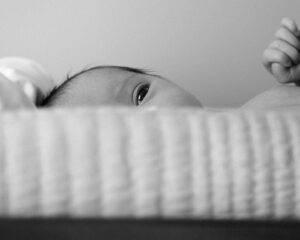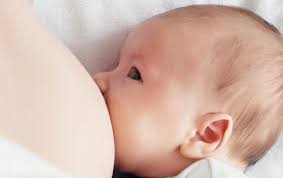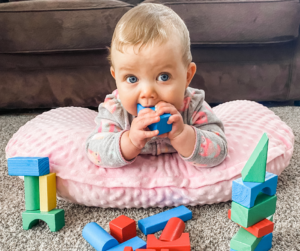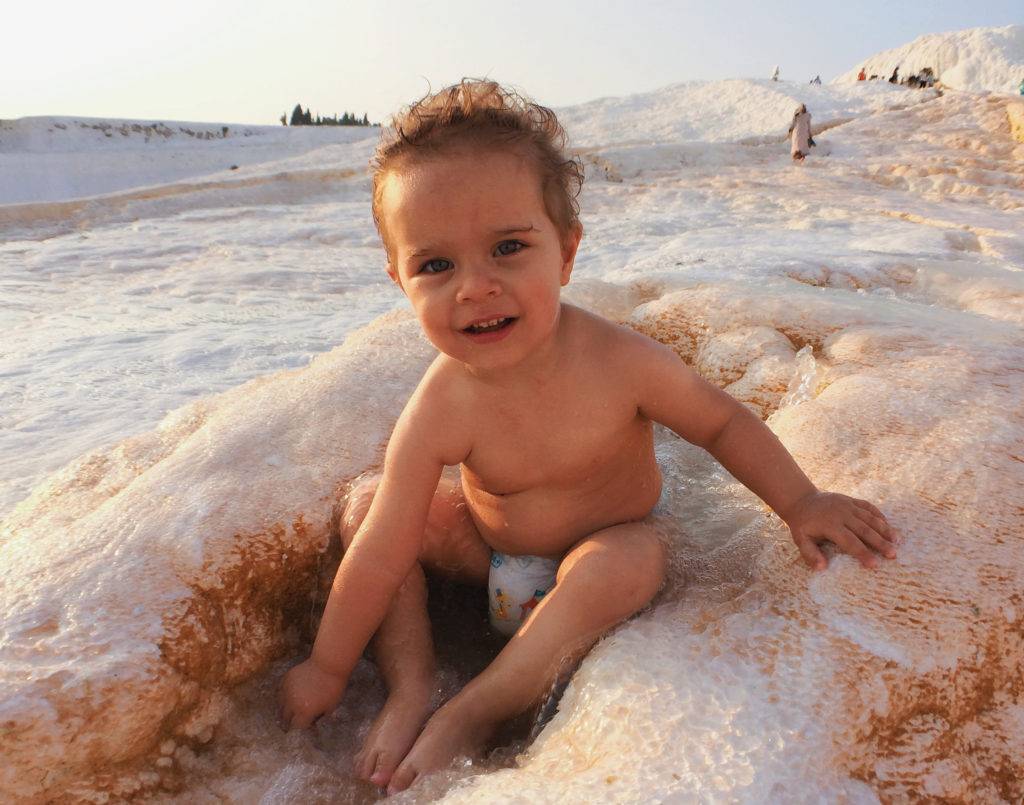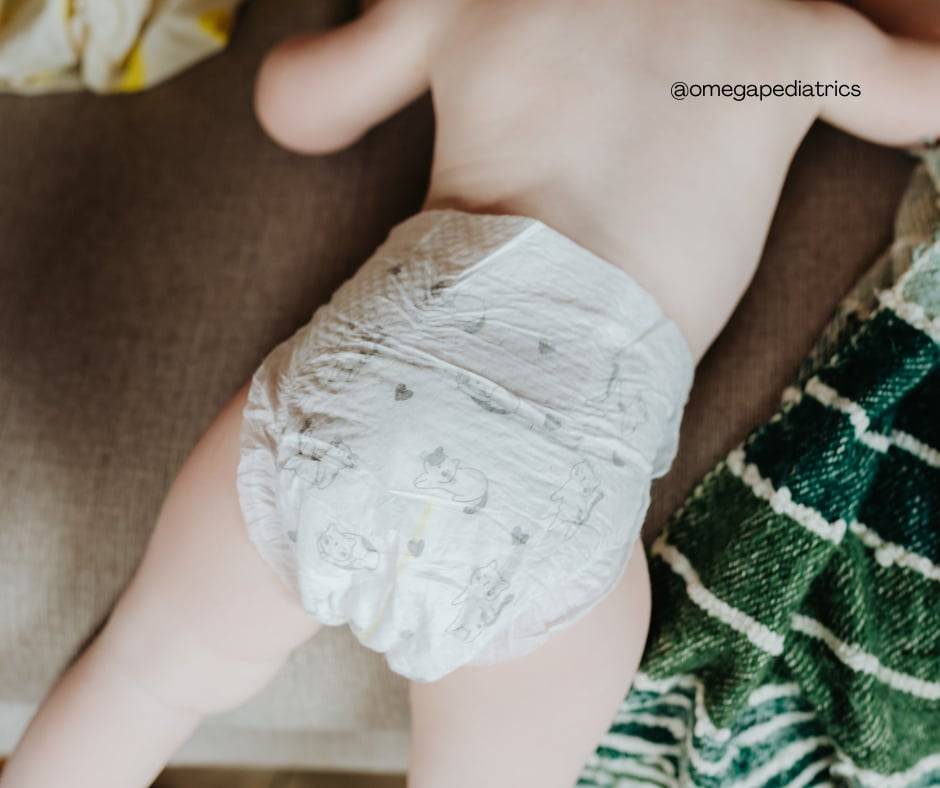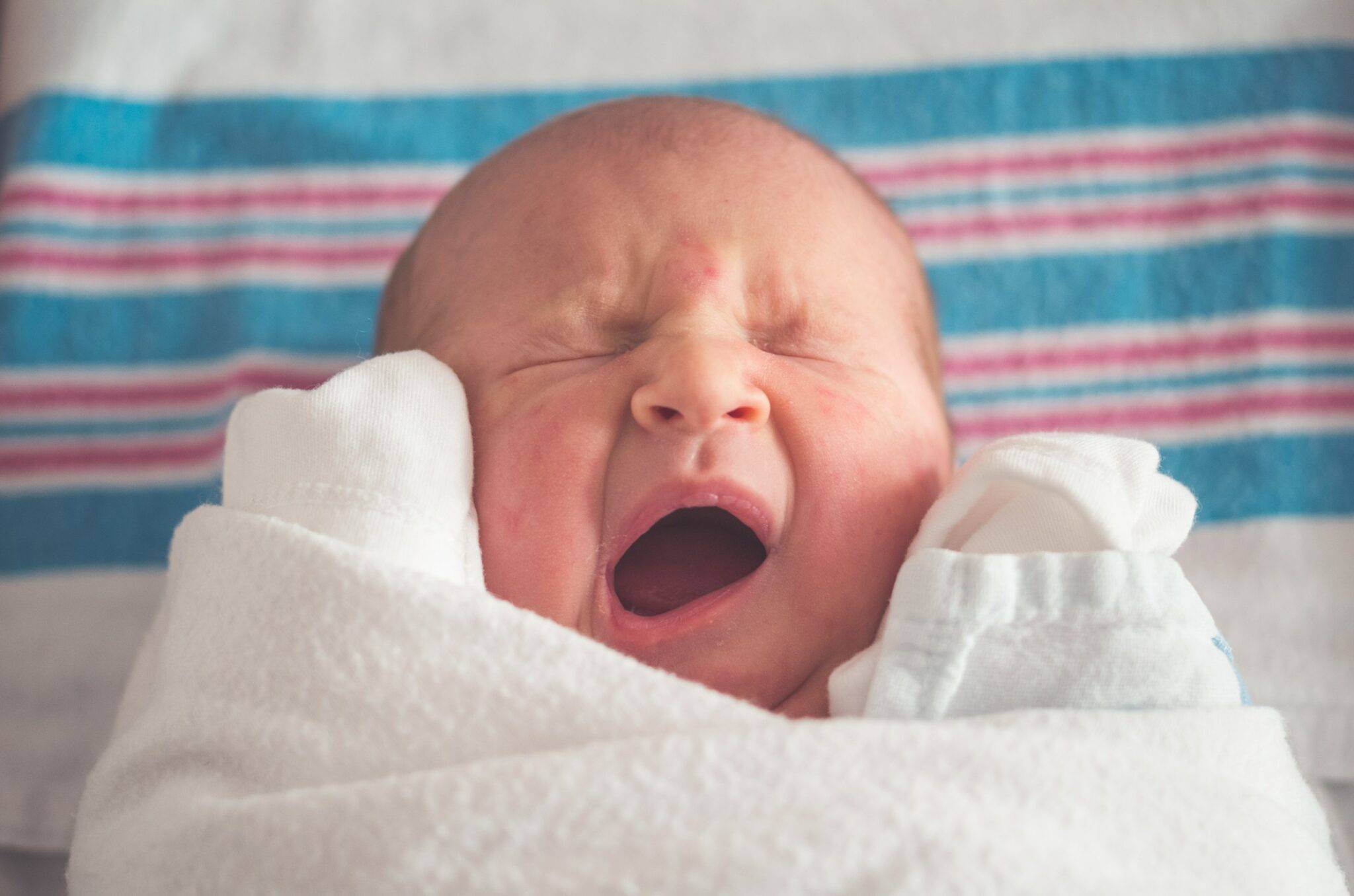Welcoming a new baby into the world is a joyous occasion, filled with many questions about your little one’s growth and development. One of the most common questions new parents have is about their baby’s vision. When newborn baby can see, and how does their vision develop in the first year?
In this blog post, we will explore the fascinating journey of a baby’s eyesight from birth to their first birthday.
Understanding Newborn Vision: The First Few Weeks
Newborns enter the world with limited vision. At birth, a baby’s eyesight is not fully developed, and their vision is blurry. Newborns see objects and people 8-12 inches away from their face, roughly the distance to a parent’s face when being held or fed.
This distance is perfect for bonding with parents and recognizing their faces. During the first few weeks, you may notice that your newborn’s eyes may wander or cross. This is normal since the muscles that control eye movement are still developing. By the end of the first month, babies focus more on faces and objects within their range of vision.
Early Visual Stimulation
In these early weeks, visual stimulation helps your baby’s vision develop. High-contrast patterns, black and white, are particularly effective at catching a newborn’s attention. Simple toys with bold patterns help stimulate your baby’s visual development. Another important aspect of early vision development is interaction.
Holding your baby close, making eye contact, and speaking to them helps them learn to focus and recognize your face. This bonding time is essential for emotional development and strengthening their visual skills.
Key Developments in the First Month
- Recognizing Faces: Newborns are naturally drawn to faces, especially those of their parents. This recognition is a crucial part of their bonding process.
- Tracking Objects: Although their tracking ability is still developing, some babies might begin to follow objects slowly with their eyes.
- Light Sensitivity: Newborns are sensitive to bright lights. They will often close their eyes or turn away from strong light sources.
The First Three Months: Gaining Focus and Coordination
Between 1-3 months, a baby’s vision begins to improve significantly. They start to follow moving objects with their eyes and focus on objects farther away. Parents notice them staring intently at their faces or colorful objects. This period is crucial for visual stimulation, as it helps to develop hand-eye coordination.
Babies also begin to develop depth perception around this time. Depth perception is the ability to judge how far away an object is, which is essential for crawling and reaching for objects later.
Encouraging Visual Development
- Use a Variety of Objects: Show your baby objects with different shapes, sizes, and colors. This helps them learn to focus on various items and track their movements.
- Move Objects Slowly: Hold toys or objects about 8-12 inches from your baby’s face and move them slowly from side to side. This encourages them to follow the movement with their eyes.
- Provide Tummy Time: Tummy time is essential for overall development, including vision. It helps strengthen the muscles to lift their head and look around.
Enhancements in Visual Skills
- Increased Range: Babies begin to see further, up to about 12 inches away, which allows them to explore more of their surroundings.
- Improved Clarity: Their vision becomes sharper, making it easy to differentiate objects and faces.
- Developing Preferences: Babies show preferences for certain colors and patterns, often drawn to high-contrast images.
The Fourth to Sixth Months: Color Vision and Tracking
From four to six months, babies’ vision continues to improve. They start to see colors more clearly and can differentiate shades. This is an exciting time since babies become more interested in brightly colored toys and objects. During this period, babies also develop better control over their eye movements.
Babies track moving objects more smoothly and accurately. This enhanced tracking ability is essential for hand-eye coordination and helps babies as they start to explore their surroundings more actively.
Important Milestones
- Color Discrimination: Babies begin to see colors, with red and green being the first hues they distinguish.
- Smooth Tracking: The ability to follow moving objects becomes more precise, essential for developing hand-eye coordination.
- Exploration and Curiosity: Babies become more curious about their environment, using their improved vision to learn about the world around them.
The Seventh to Ninth Months: Exploring the World
As babies approach the seven to nine-month mark, their vision is almost as good as an adult’s. They see further and more clearly, and their depth perception is well-developed. Babies at this stage are more curious and eager to explore their environment. They spot small objects and will pick them up to examine them closely.
This period also marks significant advancements in hand-eye coordination. Babies reach for objects more accurately, crucial for self-feeding and playing with toys.
Encouraging Exploration
Encouraging your baby to explore their environment is vital for their visual development. Here are some tips to support their curiosity:
- Create a Safe Play Area: Provide a safe and stimulating play area with various toys and objects for your baby to explore. Ensure that the area is free from small items that could pose a choking hazard.
- Introduce Different Textures: Use toys and objects with different textures to stimulate your baby’s sense of touch and sight. This helps them learn to distinguish between various surfaces and shapes.
- Play Hide and Seek with Toys: Hide a toy under a blanket and encourage your baby to find it. This game helps develop problem-solving skills and visual memory.
Advancements in Vision and Exploration
- Depth Perception: Babies develop the ability to judge distances, which is critical for crawling and reaching for objects.
- Object Recognition: They recognize familiar objects and people from a distance, enhancing their social interactions.
- Interactive Play: Babies engage in more interactive play, using their vision to guide their movements and actions.
The Tenth to Twelfth Months: Almost Perfect Vision
When babies reach their first birthday, their vision is almost fully developed. They can see as well as adults and focus on objects near and far. Babies are now experts at tracking moving objects and have excellent depth perception, which helps them as they start to walk and navigate their environment.
Parents will notice their baby is more responsive to visual cues and recognize familiar faces from across the room. This stage is refining the skills they have developed over the past year and using their vision to learn more about the world around them.
Supporting Continued Development
Even though your baby’s vision is almost fully developed, continued support is essential. Here are some activities to keep their visual skills sharp:
- Play with Balls: Rolling a ball back and forth helps your baby develop hand-eye coordination and tracking skills.
- Use Stacking Toys: Stacking rings or blocks can help improve your baby’s fine motor skills and visual coordination.
- Encourage Outdoor Play: Outdoor play provides a variety of visual stimuli and helps your baby learn to adapt to different lighting conditions.
Final Developments
- Visual Acuity: Their vision is sharp, allowing them to notice fine details in objects and their surroundings.
- Recognition Skills: Babies easily recognize familiar faces, even from across a room, essential for building relationships and a sense of security.
- Exploratory Behavior: With enhanced vision, babies are more confident in exploring their environment, supporting their overall development and learning.
Activities to Promote Healthy Vision Development
- Tummy Time: Tummy time strengthens your baby’s neck and shoulder muscles and encourages them to lift their head and look around, which helps develop their vision. Place colorful toys within their line of sight to make tummy time more engaging.
- Black and White Cards: Newborns are particularly drawn to high-contrast images. Use black and white cards with bold patterns to capture their attention and stimulate their vision. These cards can be used during playtime or placed in areas where your baby spends a lot of time.
- Mirror Play: Babies love looking at themselves in mirrors. Mirror play helps them learn to focus on faces and notice facial expressions. It’s fun to interact with your baby and support their visual development.
- Sensory Play: Incorporate toys that have different textures, colors, and shapes. Sensory play stimulates your baby’s vision and other senses, contributing to overall development. Toys with lights and sounds can be particularly engaging.
- Story Time: Reading to your baby using books with large, colorful pictures helps develop their vision and language skills. Point out and name the objects in the image to build their vocabulary and visual recognition.
- Peek-a-Boo: This classic game helps babies understand object permanence (the idea that things continue to exist even when they can’t be seen) and improves their visual tracking skills. It’s also a great way to bond with your baby and make them laugh.
How to Support Your Baby’s Vision Development
As a parent, there are many ways to support your baby’s vision development. Here are some tips to help your baby develop healthy vision:
- Provide Visual Stimulation: Use toys and objects with bright colors and interesting patterns to catch your baby’s attention. Moving objects like mobiles helps with visual tracking. High-contrast books and toys are particularly engaging for newborns.
- Encourage Face Time: Spend time looking into your baby’s eyes and make facial expressions. This helps your baby learn to focus and recognize different facial features. Mirror play is fun for babies to observe their facial movements.
- Create a Safe Environment: Your baby’s environment is safe for exploring. Remove small objects that pose a choking hazard and provide space to move around. Soft mats and baby-proofed rooms encourage safe exploration.
- Attend Regular Check-ups: Regular pediatric check-ups are essential for monitoring your baby’s overall health and development, including their vision. Early detection of any vision issues leads to timely interventions.
- Play Games: Simple games like peek-a-boo and patty-cake help your baby develop visual skills and hand-eye coordination. Introduce toys that require reaching and grasping to enhance these abilities.
- Use Light Wisely: Ensure your baby gets plenty of natural light during the day. Avoid bright lights or screens close to bedtime to help their eyes rest. Natural light exposure helps regulate their sleep patterns.
Early detection and treatment of vision problems are crucial for preventing long-term issues. Regular eye check-ups during pediatric visits ensure your baby’s vision is developing correctly.
Recognizing Normal vs. Abnormal Vision Development

It’s important to differentiate between normal variations in vision development and potential issues. Some babies may take a little longer to develop certain visual skills, which is usually not a cause for concern. However, significant delays or abnormalities should be evaluated by a healthcare professional.
Regular visits to your pediatrician include vision screenings to ensure your baby’s eyes are developing properly. These screenings help identify issues early on, allowing for timely intervention and treatment if necessary.
When to Consult a Doctor
While most babies develop their vision without issues, be mindful of signs that may indicate a problem. If you notice any of the following, consult your pediatrician:
- Persistent Eye Crossing: If your baby’s eyes are still crossing frequently after three months, it could indicate a vision problem.
- Lack of Focus: If your baby can’t focus on objects or follow moving objects by three months, it’s worth discussing with your doctor.
- White or Grayish Pupils: This could indicate a cataract or other eye condition and should be checked immediately.
- Excessive Tearing or Eye Redness: These symptoms could indicate an infection or blocked tear duct.
- No Response to Visual Stimuli: If your baby doesn’t respond to visual stimuli like lights or bright objects, it could be a sign of an issue that needs medical attention.
Learn When Newborn Baby Can See By Understanding Their Milestones
Understanding when newborn baby can see and how their vision develops in the first year is fascinating and essential for supporting their growth. From the blurry first few weeks to almost perfect vision by their first birthday, babies undergo remarkable changes in their eyesight.
Parents can support their baby’s visual development and help them confidently explore the world. By following the guidelines, ensure your baby’s vision develops healthily and they reach each milestone. Every baby is unique, and development can vary. If you ever have concerns, don’t hesitate to reach out to your pediatrician for advice and support.
For more tips on newborn care and development, visit Omegapediatrics.com, and stay informed on how to give your baby the best start in life. Check out these helpful articles on Omegapediatrics.com:
- Joyful Milestones: From Newborn to Toddler–Your Baby’s Journey with a Pediatrician
- 12 Reasons to Visit Your Pediatrician Once You Have a New Baby

